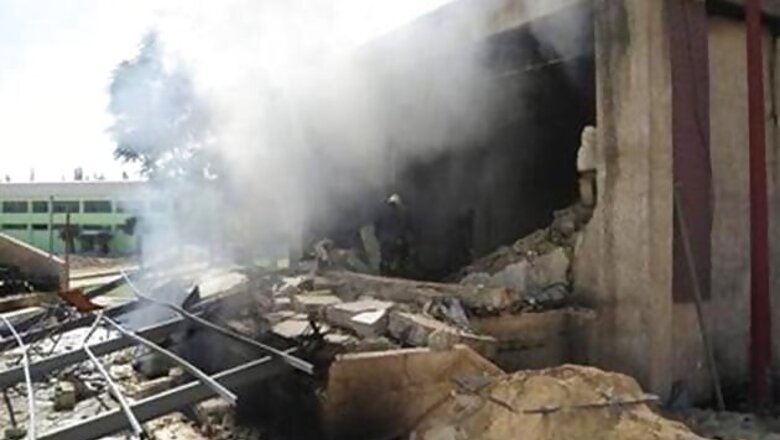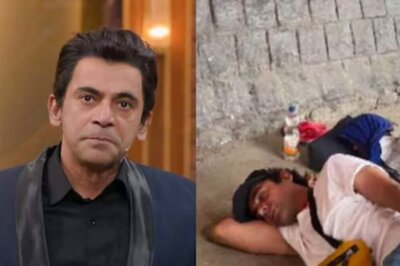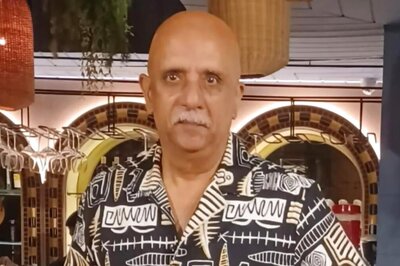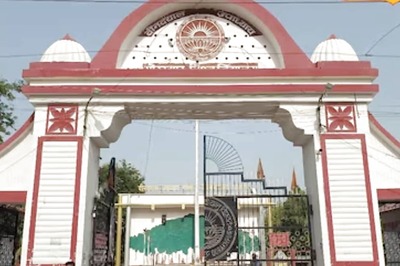
views
Amman: An international human rights group said on Sunday it has obtained new evidence that Syrian troops are using cluster bombs, widely banned munitions that pose a grave risk to civilians because they burst into bomblets over large areas and often linger on the ground, detonating only when touched.
Steve Goose of US-based Human Right Watch said cluster bombs "have been comprehensively banned by most nations, and Syria should immediately stop all use of these indiscriminate weapons that continue to kill and maim for years." HRW had previously reported cluster bomb remnants found in Homs and nearby Hama this summer.
"Syria's disregard for its civilian population is all too evident in its air campaign, which now apparently includes dropping these deadly cluster bombs into populated areas," said Goose, who is HRW's arms director. Syrian government officials had no immediate comment.
There were also new signs of the mounting tensions between Turkey and Syria, two former allies who have become bitter foes since the outbreak of the 19-month-old rebellion against President Bashar al Assad. Turkish Foreign Minister Ahmet Davutoglu announced that Turkey is barring Syrian civilian flights from Turkey's airspace, a day after Syria issued such a ban for Turkish commercial aircraft. Davutoglu said Syria is "abusing" civilian flights by using them to transport military equipment.
Last week, Turkey forced a Syrian plane coming from Russia to land and confiscated what it said was military equipment on board. Russia said the plane was carrying spare radar parts, while Syria accused Turkey of piracy.
After a week of exchanges of fire across the volatile border, a Turkish newspaper reported that Turkey has reinforced four naval bases along its Mediterranean coast north of Syria. In an unattributed report, the Hurriyet daily said Turkey sent frigates with cannons, as well as anti-ship and anti-aircraft missiles to the naval bases.
Turkey has been retaliating for Syrian shells and mortar rounds hitting Turkish soil.
Despite Turkey's recent measures, Syrian opposition leaders say Ankara and other foreign backers of the rebels are not doing enough to help them break the battlefield stalemate. Abdelbaset Sieda, head of the largest opposition group, the Syrian National Council, said the international community is doing nothing more than managing the Syrian conflict.
The international community must establish safe havens in Syria and enforce no-fly zones to help the rebels counter the regime's airstrikes on rebel-held areas, Sieda told reporters in Istanbul, Turkey. This would also cut down on the number of Syrians seeking refuge abroad and "resolve the humanitarian crisis, especially with winter approaching," he said.
The idea of safe havens has found little international support. Foreign backers of the rebels fear being dragged deeper into the conflict. Over the summer, the Assad regime stepped up airstrikes in an attempt to dislodge rebel fighters from urban strongholds, sharply driving up daily casualty tolls.
In its report on cluster bombs, Human Rights Watch said Syrian activists posted at least 18 videos from October 9-12 showing remnants of the bombs in or near several towns, which included the central city of Homs, the northern cities of Idlib and Aleppo, the countryside in Latakia, and the eastern Ghouta district near the capital Damascus.
Many were on a north-south highway that has been the scene of fighting in recent days.
Cluster bombs are of particular concern because they scatter small bomblets over a wide area. Many of the bomblets do not immediately explode, posing a threat to civilians long afterward.
Human Rights Watch said the munitions in the video were Soviet-made. Before its collapse, the Soviet Union was a major arms supplier to Syria.
It is nearly impossible to independently verify such reports in Syria, where journalists' movement is restricted and the government keeps a tight-lid on news related to the revolt, which it blames on a foreign conspiracy.
The report said the cluster bomb canisters and submunitions displayed in the videos "all show damage and wear patterns produced by being mounted on and dropped from an aircraft." Some residents confirmed in interviews that helicopters dropped cluster bombs near their homes on October 9, the group said.
The group did not have information if the munitions had caused any casualties.
Human Rights Watch "is deeply concerned by the risks posed by the unexploded submunitions (bomblets) to the civilian population, as men and even children can be seen in the videos handling the unexploded submunitions in life-threatening ways," according to the report.
HRW said it had confirmed that the fragments shown in the videos were RBK-250 series cluster bomb canisters and AO-1SCh fragmentation bomblets.
The military publisher Jane's Information Group says Syria possesses Soviet-made RBK-250 cluster bombs, the report said. It said there was no information available on Syria's acquisition of the weapons.
More than 32,000 people have been killed in Syria since a revolt against Assad erupted. Hundreds of thousands of Syrians have fled the fighting between the rebels and the army, which has been using missiles, tanks and warplanes in strikes that devastated whole neighborhoods.
Earlier Sunday, Syrian gunmen fired on a bus transporting workers to a blanket factory, killing four and wounding eight, a Syrian official said. He said the attack happened at the entrance of Homs. He gave no other details and spoke anonymously as he was not authorized to make statements to the media.
The Syrian state news agency said a suicide bomber crashed an explosives-laden sedan into a coffee shop at a Damascus residential neighborhood, causing damage but no fatalities. SANA said the explosion took place at dawn on the capital's Mazzeh highway. An Associated Press reporter at the site says the blast destroyed a balcony and ripped off a building facade.
Hours afterward, a second blast rocked the same area, seriously wounding a journalist, the agency said. It said an unidentified armed group detonated an improvised explosive device attached to the car of the journalist, Ayman Youssef Wannous, who works for a private Syrian magazine.
In neighboring Jordan, Syrian refugee Mustafa Ali Kassim, 24, died of shrapnel wounds inflicted when the Syrian army opened fire at his group of 229 Syrian refugees while crossing a border fence into Jordan before dawn Sunday, said Syrian refugee camp spokesman Anmar Hmoud.




















Comments
0 comment